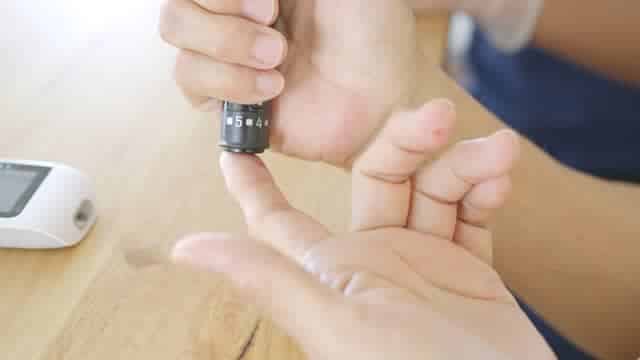Continuous Glucose Monitoring (CGM) is revolutionizing diabetes management both in and out of the hospital setting. By providing real-time glucose readings, CGM technology offers significant advantages for patient care and nursing efficiency. In this article, we will explore how CGM use in hospitals helps both patients and nurses, improving overall health outcomes and streamlining medical procedures.
What is Continuous Glucose Monitoring?
Continuous Glucose Monitoring is a method of tracking glucose levels in real-time throughout the day and night. Unlike traditional blood glucose meters that provide a single reading at one point in time, CGM systems measure glucose levels continuously, providing dynamic data that helps in managing diabetes more effectively. A CGM system typically includes a small sensor inserted under the skin, a transmitter that sends data to a display device, and software to analyze glucose trends.
Benefits of Continuous Glucose Monitoring for Patients
Real-Time Data and Alerts
One of the most significant benefits of Continuous Glucose Monitoring for patients is the ability to receive real-time data and alerts. This continuous stream of information allows patients to make immediate adjustments to their insulin dosage, diet, or activity level, helping to prevent hyperglycemia and hypoglycemia. The immediate feedback loop can lead to better overall glucose control and reduce the risk of diabetes-related complications.
Improved Quality of Life
CGM systems improve the quality of life for patients by reducing the frequency of fingerstick tests, which can be painful and inconvenient. The continuous data stream also helps patients feel more in control of their condition, reducing anxiety and improving mental health. For hospitalized patients, this means a less intrusive monitoring process and a more comfortable stay.
Enhanced Long-Term Health Outcomes
Long-term use of CGM has been associated with better health outcomes for diabetic patients. By maintaining tighter glucose control, patients can reduce the risk of complications such as neuropathy, retinopathy, and cardiovascular disease. This is particularly important in a hospital setting where maintaining optimal glucose levels can significantly impact recovery and overall prognosis.
Benefits of Continuous Glucose Monitoring for Nurses
Reduced Workload
For nurses, Continuous Glucose Monitoring can significantly reduce the workload associated with diabetes care. Traditional glucose monitoring requires multiple daily fingerstick tests, which can be time-consuming. With CGM, nurses can monitor glucose levels remotely and continuously, freeing up time to focus on other critical aspects of patient care.
Improved Accuracy and Efficiency
CGM systems provide more accurate and timely data compared to traditional methods. This accuracy allows nurses to make better-informed decisions regarding patient care, leading to more effective treatment plans. Additionally, the efficiency gained from using CGM means that nurses can respond more quickly to glucose level changes, improving patient outcomes.
Enhanced Patient-Nurse Communication
Continuous Glucose Monitoring can improve communication between patients and nurses. The continuous data allows for more informed discussions about diabetes management and treatment adjustments. Patients are often more engaged and proactive in their care when they can see real-time data, leading to better adherence to treatment plans.
More Read About: What Factors Should You Consider When Buying Continuous Glucose Monitors?
CGM Technology Advancements in Hospitals
Integration with Hospital Systems
One of the recent advancements in Continuous Glucose Monitoring technology is the integration with hospital electronic health records (EHR) systems. This integration allows for seamless data sharing between CGM devices and hospital systems, ensuring that all healthcare providers have access to up-to-date glucose information. This holistic view of patient data can lead to more coordinated and effective care.
Remote Monitoring and Telemedicine
With the rise of telemedicine, CGM technology has become even more valuable. Remote monitoring capabilities allow healthcare providers to track patients’ glucose levels even when they are not in the hospital. This is particularly beneficial for managing patients with chronic conditions who require ongoing monitoring. Remote CGM data can be used to make real-time adjustments to treatment plans, improving patient outcomes and reducing hospital readmissions.
Artificial Intelligence and Predictive Analytics
The incorporation of artificial intelligence (AI) and predictive analytics in CGM systems is another significant advancement. AI algorithms can analyze glucose data to predict trends and potential issues before they occur. For example, predictive analytics can alert healthcare providers to an impending hypoglycemic event, allowing for preemptive action. This proactive approach to diabetes management can significantly improve patient safety and outcomes.
Challenges and Considerations
Cost and Accessibility
One of the primary challenges of implementing Continuous Glucose Monitoring in hospitals is the cost. CGM systems can be expensive, and not all patients or healthcare facilities can afford them. Ensuring that CGM technology is accessible to all patients who could benefit from it is crucial for maximizing its impact on healthcare.
Training and Education
Another consideration is the need for proper training and education for both patients and healthcare providers. Effective use of CGM technology requires understanding how to interpret the data and make appropriate adjustments to treatment plans. Hospitals must invest in training programs to ensure that both staff and patients can fully benefit from CGM systems.
Conclusion
Continuous Glucose Monitoring is transforming diabetes care in hospitals, offering numerous benefits for both patients and nurses. By providing real-time data and reducing the need for frequent fingerstick tests, CGM improves patient quality of life and enhances long-term health outcomes. For nurses, CGM reduces workload, improves accuracy, and facilitates better communication with patients. As technology continues to advance, the integration of CGM with hospital systems, remote monitoring capabilities, and AI-driven predictive analytics will further enhance its impact on healthcare. Despite challenges such as cost and the need for education, the benefits of Continuous Glucose Monitoring in hospitals make it a valuable tool for improving patient care and supporting nursing staff.


